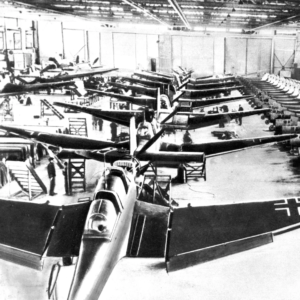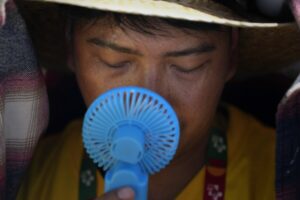In the late 1960s and early 1970s, Freedom House Ambulance Service set the standard for emergency medical care, laying the groundwork for the services available today
Lillian Ali – Staff ContributorMay 21, 2025
It was mid-1975 when paramedic John Moon performed his first intubation in the field. A former orderly, he’d decided to become a paramedic after encountering several in the Pennsylvania hospital where he’d worked a few years prior. Responding to an emergency call about a man experiencing heart failure, Moon radioed his supervisor, the physician Nancy Caroline, who told him to intubate the patient.
Moon was shocked. “I didn’t know that was OK,” he recalls.
Up to that point, Moon had only practiced intubation on mannequins and animals or in the operating room. Now, he would have to guide a flexible tube down the windpipe of his unconscious patient to keep the airway open, without the aid of a hospital’s bright lights and sterile environment.
Moon’s life-saving act is believed to be the first field intubation performed by a paramedic in the United States. His achievement was not just a surprise to him, but also to the staff at the hospital where he brought the patient for further treatment, who questioned why a non-doctor had intubated the man.
/https://tf-cmsv2-smithsonianmag-media.s3.amazonaws.com/filer_public/f6/8d/f68dee50-0953-4d26-8798-68eef01409fe/john-moon.jpg)
At the time, Moon was working for Freedom House Ambulance Service, the first emergency medical service (EMS) in the U.S. staffed entirely by trained paramedics, all of whom were Black men and women from Pittsburgh’s Hill District. A collaboration between the city’s Presbyterian-University Hospital and a local civil rights nonprofit, Freedom House—founded in 1967 and shut down in 1975—was simultaneously a job training program, a medical service and a study of how emergency medicine could be improved.
Today, emergency rooms nationwide rely on ambulances staffed by emergency medical technicians (EMTs) and paramedics (those who have achieved the highest level of EMT training) to keep patients alive en route to hospitals. Before Freedom House’s ambulances set the standard for EMS, however, an injured person was lucky to get prehospital care at all. The national emergency number, 911, only started accepting calls in select regions in 1968. Prior to that, Americans in crisis would either have to know the number of the local emergency service or dial zero to connect with an operator. Whether an ambulance, a police wagon or a hearse answered the call depended on where the caller lived.
The origins of emergency medical services
The word “ambulance” is derived from the French phrase “hôpital ambulant,”which translates to “walking hospital.” The earliest mobile “ambulances” were developed for warfare, with crews on horse-drawn wagons treating and transporting injured soldiers in Isabella of Castile’s 15th-century armies and Napoleon Bonaparte’s late-18th-century forces. But civilian ambulances didn’t gain traction in the U.S. until 1865, when a hospital in Cincinnati hired a driver for its ambulance service.
Over the next century, these services remained few and far between. Many of the best-equipped ambulances were limited to military use, and the quality and types of civilian ambulances available varied greatly by region.
There was little more to early 20th-century prehospital care than “transporting bodies,” says Jae Yang, an EMS educator at the University of Maryland, Baltimore County. “It was truly just sick people—or dead people—being transported from one location, which is their home or wherever they are having their emergency, to the closest hospital.”
/https://tf-cmsv2-smithsonianmag-media.s3.amazonaws.com/filer_public/46/b8/46b87efb-6700-401b-b46a-c62d949b412b/bellevue_hospital_ambulance_new_york_times_1895.jpeg)
During the 1950s and 1960s, civilian ambulances were a jumble of unregulated services operated by hospitals, police and fire departments, and funeral homes. Police vans and hearses were among the only available vehicles large enough to transport someone lying down.
“We were seeing a lot of people dying on the way to the hospital, even if that’s 30 minutes [or] three hours,” Yang says.
1966 marked a nationwide turning point in EMS history. That year, the National Academy of Sciences released a report titled “Accidental Death and Disability: The Neglected Disease of Modern Society,” also known as the “White Paper.” It argued that “the human suffering and financial loss from preventable accidental death constitute a public health problem second only to the ravages of ancient plagues or world wars.” In 1965 alone, the report stated, 49,000 Americans had died in car accidents—around 12,000 more than the American death toll during the Korean War.
The public response to the White Paper prompted the passage of the Highway Safety Act and the National Traffic and Motor Vehicle Safety Act. “Washington, which had already tasked the Department of Transportation with improving highway safety standards, now added to this burden the job of elevating the medicine practiced on ambulances to a level somewhere above lethal,” writes Kevin Hazzard in American Sirens: The Incredible Story of the Black Men Who Became America’s First Paramedics.
The formation of Freedom House
In November 1966, former Pennsylvania Governor David Lawrence collapsed at a rally. He was transported to Presbyterian-University Hospital but received no emergency medical care en route—a situation that was all too familiar to Peter Safar, the anesthesiologist in charge that day. Safar and his team administered CPR and restarted Lawrence’s heart, but the governor remained unresponsive. The lack of oxygen to his brain caused irreversible damage and left him in a coma. Lawrence’s family agreed to take him off life support 17 days later.
/https://tf-cmsv2-smithsonianmag-media.s3.amazonaws.com/filer_public/6e/3c/6e3c8284-7e4a-42f7-b82d-7599003b7a81/20210303_155702_1.jpg)
A few months earlier, Safar’s daughter, Elizabeth, had suffered a severe asthma attack while he and his wife were out of town. She was brought to a children’s hospital, but by then, she was already comatose. As Safar, who is known for pioneering modern CPR techniques and establishing the first intensive care unit in the U.S., later wrote in his autobiography, when he finally reached Elizabeth’s bedside later that night, he “could resuscitate her heart and lungs, but not her brain.”
Elizabeth and Lawrence were both transported to hospitals without unnecessary delay, but even that wasn’t guaranteed in the 1960s. In Pittsburgh’s majority-Black Hill District, for instance, most emergency medical transportation was provided by the majority-white police department. Moon, a former resident who describes the relationship between the police and the community as “adversarial,” and he says officers “decided whether they wanted to come, how long they wanted to take to get there or whether they wanted to transport you to the emergency room.”
In the 2023 WQED documentary “Freedom House Ambulance: The First Responders,” lifelong Hill District resident Brenda Tate recalled, “Any time someone was sick, the big black wagon would come up, and they would just throw them in and leave. They used the same wagon to put dead bodies in [and] people they arrested.”
Tired of receiving inadequate responses from the police, local leaders approached Safar’s boss in 1967 to seek advice on buying an ambulance to transport sick patients to the hospital for checkups. The hospital administrator referred them to Safar, who instead proposed starting a pilot ambulance program focused on the treatment and transportation of critically ill or injured patients. In return, community members would agree to be trained as paramedics.

At the time, Freedom House Enterprises was a nonprofit that organized voter drives, held job trainings and supported Black-owned businesses in the Hill District. The group agreed to partner with the hospital, helping to recruit residents for a 32-week paramedic course designed by Safar. The Maurice Falk Medical Fund, under the leadership of former ambulance driver Philip Hallen, helped drum up support for the program, which soon signed a contract with the City of Pittsburgh. Freedom House officially started offering its services to the community in July 1968. While it technically charged between $25 and $50 for each run, Freedom House didn’t spend its time chasing down patients to get paid. “My first memory of Freedom House was people coming to take you to the hospital that looked like you, that understood you,” said Tate in the documentary.
But the racial disparity that motivated Freedom House’s inception hung over the service. Its recruits were labeled “unemployables” or “society’s throwaways,” even after they became trained paramedics, Moon says.
Moon joined Freedom House in his early 20s, after seeing its staff bring a patient to the hospital where he was employed as an orderly in 1971. He noticed the Freedom House patch on the paramedics’ uniforms, asked around about where the program was headquartered and then visited its offices to apply for the job. Though he was rejected on his first attempt, Moon found a basic EMT training course, passed it and reapplied a few months later. This time, he was accepted. Moon continued to work in emergency medicine after leaving Freedom House, becoming the assistant chief of Pittsburgh’s EMS division before retiring in 2009.
Moon’s enthusiasm was a departure from Safar’s prior struggles to recruit the first class of paramedics. Without an existing service that could inspire applicants like Moon, recruiters had to promise a free dinner to anyone who would attend the first training. They were “literally dragging people off the street,” writes Hazzard, “[and] together, they roped in anybody not fast enough to get away.”
/https://tf-cmsv2-smithsonianmag-media.s3.amazonaws.com/filer_public/af/55/af5560f2-b602-4386-9c23-0d1ef3c2320c/screenshot_2025-05-21_at_105411am.png)
One of these early recruits, George McCary III, was 19 years old when he first joined Freedom House. In the WQED documentary, he recalled an ambulance run where the paramedics were called in to treat a man who’d had a heart attack. “To be there, to see the whole system, from me opening the airway, to them shooting drugs in him, to him getting any kind of response,” McCary said, it was “amazing to be on the team from scratch.”
Freedom House proved to be a resounding success. Over two months in 1971, physicians surveyed 1,421 patients brought into three Pittsburgh-area hospitals. According to the Pittsburgh Press, they found that the “level of ‘inappropriate’ prehospital care” was 62 percent for the police but just 11 percent for Freedom House. As Moon tells NPR, some patients outside of the Hill District would refuse to call the police when they suffered a medical emergency, asking to “send Freedom House” instead.
Freedom House’s legacy
Even as Freedom House proved its efficacy, political opposition to the organization worsened, says Matthew Edwards, a psychiatrist who has studied the service’s history.
Pittsburgh Mayor Pete Flaherty vehemently opposed Freedom House, slashing its budget and publicly calling to return ambulance services to the police department. Despite outside calls for Freedom House to expand beyond the Hill District and Pittsburgh, these so-called Ambulance Wars continued.
Freedom House was slowly written out of Pittsburgh as Flaherty continued cutting budgets and promoting police services. In 1975, Moon recalls, the mayor’s office told Freedom House’s drivers to stop using their sirens, as they made too much nose. Later that year, the City of Pittsburgh ended its contract with Freedom House, replacing it with a new, majority-white paramedic service.
During its first year of service, Freedom House had transported more than 4,600 patients across 5,800 calls, saving 200 lives, according to data collected by Safar. On average, the service’s five ambulances responded to nearly 6,000 callsa year. Despite these achievements, Freedom House’s contributions to emergency medicine have largely been overlooked.
The downplaying or erasure of Black people’s contribution to science is not unique to Freedom House. Black doctors like Rebecca Lee Crumpler and scholars like Katherine Johnson, a mathematician at NASA, were long written out of history, Edwards says. To him, Freedom House represents the histories of race, labor, civil rights and medicine, “crystallized as one story.”
At the intersection of those histories, Freedom House became an “origin story” for emergency medicine, says Hazzard, whose 2022 book brought renewed attention to the organization. He adds, “All these different origin stories that we love so much and we follow, that’s where these guys belong in the world of EMS.”
As Moon intubated his first patient in 1975, he was writing a page in the origin story of emergency medicine. “Failure was not an option,” he says. “We were writing the book, the training manual, that every paramedic in the United States has to read.”Reflecting on Freedom House’s legacy, Moon adds, “If you erase, eliminate the history makers, you simply eliminate the part of history that they made.”




